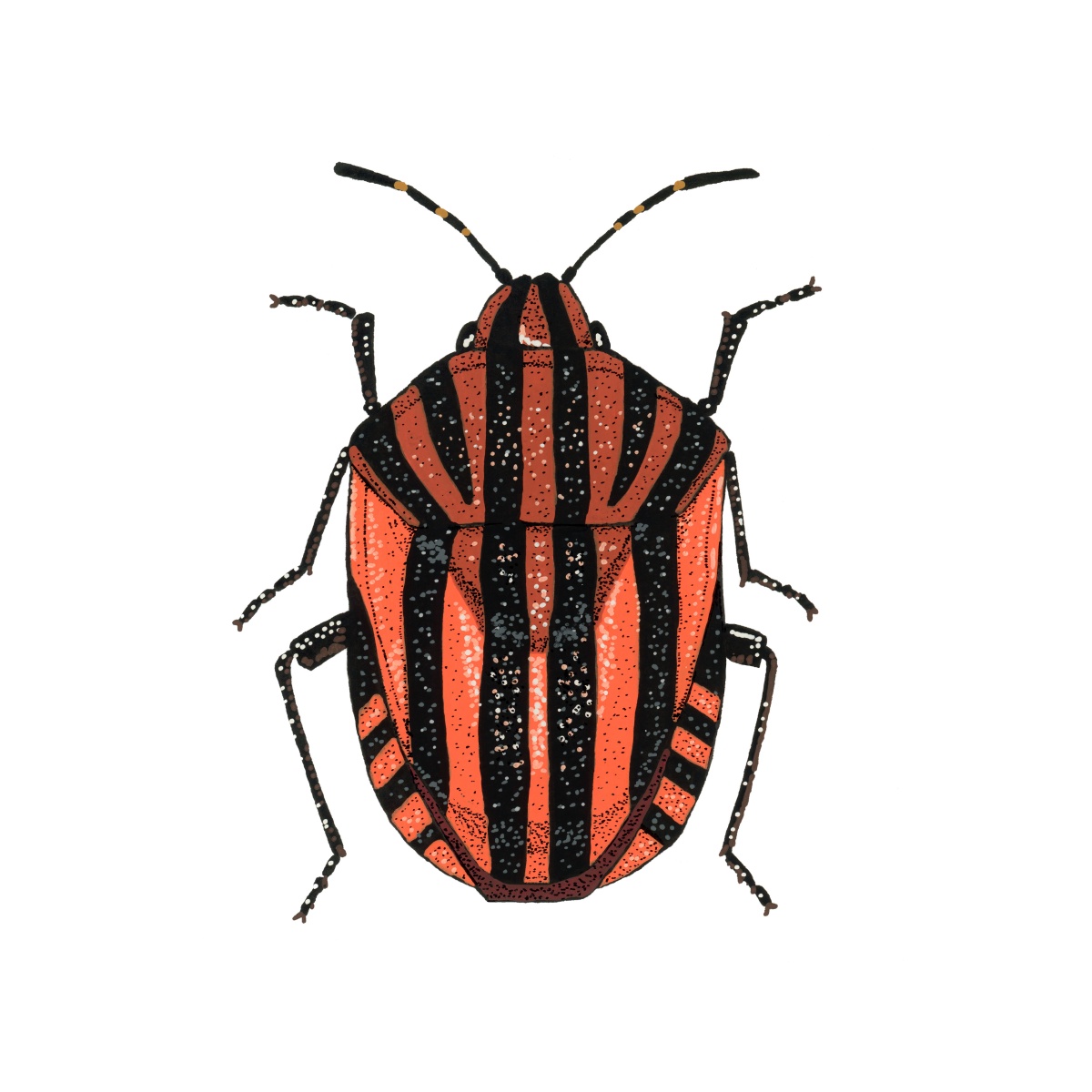Please scroll through to see every beetle or bug with little descriptions of them.
Hand drawn illustrations with Molotow acrylic paint markers and fine liners.
Graphosoma Italicum
A striped shield bug, originally only native in the mediterranean, they have travelled northwards and were recently found in sites in London in 2020. They can grow to 8-12mm. The scientific name for shield bugs in Pentatomidae, they name is from the Greek pente meaning ‘five’ and tomos meaning ‘section’, and refers to the five segments of their antennae. They were first classified in 1766 by Otto Friedrich Müller.
Beetles are insects from the Coleoptera order. There are about 400,000 described species, making it one of the largest orders of insects. Their front pair of wings are hardened into wing cases, distinguishing them from other insects. The oldest known beetle, Coleopsis, is 295million years old, it is sadly now extinct.
Beetles make up a huge part of the world’s biodiversity, and as such their conservation is very important. Loss of habitat and biodiversity around the world impacts heavily on beetles. Beetles can have very specific habitats and long life cycles that can make them vulnerable. Because of this some species are highly threatened while others are feared already extinct. The presence of beetles can indicate how healthy the planet is, and we should encourage a love for beetles, and protecting their habitats can help us to protect the world from ecological disaster.
Bugs are insects from the Hemiptera order. They are true bugs, and share a common arrangement of piercing-sucking mouthparts. They are called the true bugs, because we often refer to other creepy crawlies collectively as bugs when they aren’t, for example the ladybug is actually a beetle! There are about 80,000 species of hemiptera. Many bugs are pests, to both humans and plants, however the climate catastrophe that humans have created has destroyed habitats and affected the global migrations of hempiterans. For example, rising global temperatures are correlated with the severity of potato leafhopper infestation, so increased warming may worsen infestations in future.
Here I have drawn bugs from Pentatomoidea (a super family in the Heteroptera suborder of the Hemiptera order) which includes stink bugs and shield bugs, jewel bugs, giant shield bugs, and burrower bugs.

















